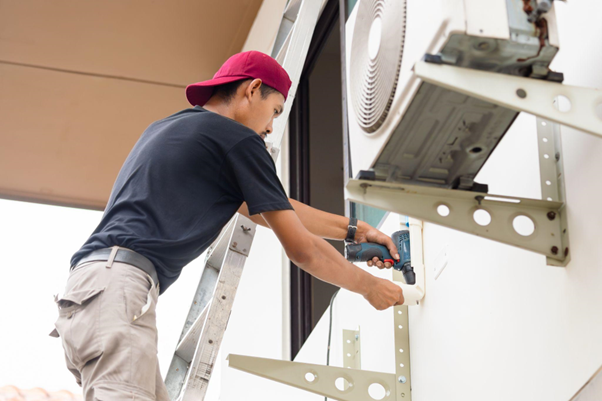A successful aircon installation depends on planning, not luck. Select the right capacity, establish clear routes for power and drainage, and collaborate with an air conditioning service that documents every step. When you align design and execution from the start, the system cools efficiently, runs quietly, and costs less to maintain across the seasons. Treat the following mistakes as red flags to prevent noise, leaks, and premature breakdowns.
1. Skipping a Proper Load Calculation
Many projects fail because the contractor guesses capacity. A room’s floor size, insulation, windows, sun exposure, occupancy, and appliances must all be taken into account when calculating its heat load. Oversized units short-cycle, waste energy, and leave humidity high. Undersized systems run flat out, overheat components, and still feel weak at midday. Request a written calculation and make sure the coil capacity and indoor airflow correspond to the condenser that was chosen. If the design uses inverter units, verify minimum and maximum capacities so the system can modulate during cool evenings without hunting.
2. Treating Electrical and Drainage as Afterthoughts
Power and condensate management decide daily reliability. Before drilling begins, make sure the breaker size, cable specifications, and a dedicated circuit are all correct. Fit an isolator within reach of the condenser to support safe servicing. Whenever feasible, map a gravity-fed drain; if a pump is required, make sure it has a clean-out point and backflow protection. Run a drip test before handover, protect lines from kinks, and keep traps accessible. A little forethought keeps ceilings dry in wet months and stops nuisance trips on hot afternoons.
3. Choosing Poor Locations for Indoor and Outdoor Units
Placement influences comfort, noise, and lifespan. As part of any aircon installation, position indoor heads where air circulates the space instead of blasting faces or short-circuiting across corridors, and keep them out of direct sunlight. Set the outdoor unit on a stable foundation with vibration cushions, away from fumes that corrode fins and from planter boxes. Respect the manufacturer’s clearances on all sides and avoid hot corners that bake the compressor. When you cite the condenser, account for nearby bedrooms and neighbours because reflected sound from walls can intensify at night.
4. Neglecting Refrigerant Piping Standards
Neat trunking means little if the internals are wrong. Pipe diameters, equivalent lengths, and height differences must match the manual for the specific model. Request nitrogen purging during brazing to prevent oxide scale that can foul valves. Pressure-test with dry nitrogen, then pull a deep vacuum and confirm that the system holds before releasing refrigerant. Insulate suction lines properly to prevent sweating and heat gain. If the line length exceeds the factory allowance, insist that the team weigh in the additional charge rather than guessing. Skipping these steps reduces capacity and shortens compressor life.
5. Overlooking Commissioning and Handover Details
Many issues start on day one. A professional air conditioning service should record vacuum level, standing pressure, voltage, current draw, and temperature split at each head. The group should align louvres, calibrate thermostats, and show how to operate quietly at low fan speeds. A written guarantee, a basic maintenance schedule, a filter cleaning schedule, and pictures of the insulation joints, drain exits, and electrical terminations should all be provided to you. A disciplined handover prevents callouts during the first humid week and gives you baseline readings for future diagnostics.
Conclusion
Aircon projects do not fail by chance. They fail when capacity is guessed, drains and wiring are improvised, units are sited poorly, piping standards are ignored, and commissioning is rushed. Plan each step with a qualified air conditioning service, insist on calculations and documentation, and treat commissioning as a formal milestone. Your air conditioning installation will cool effectively, remain silent, and last longer with fewer surprises if the proper controls are in place.
Contact Newway to plan your air conditioning installation, from load calculation to commissioning, with documented electrical work, correct piping, and clear aftercare.

